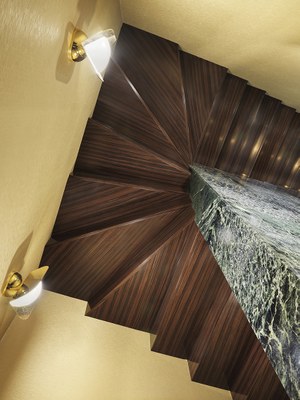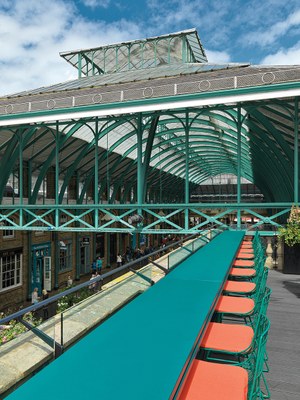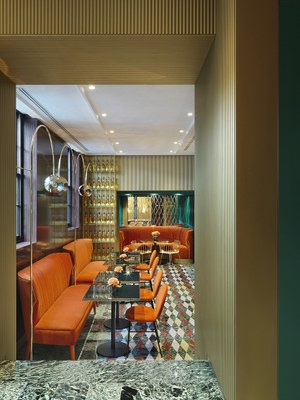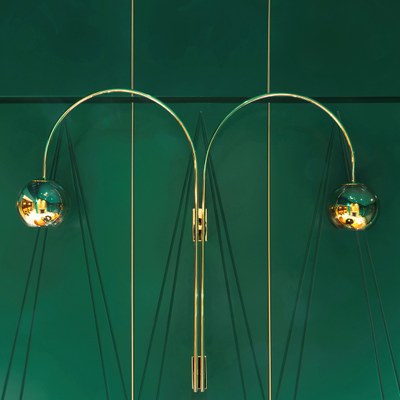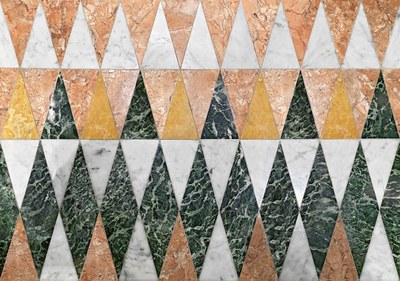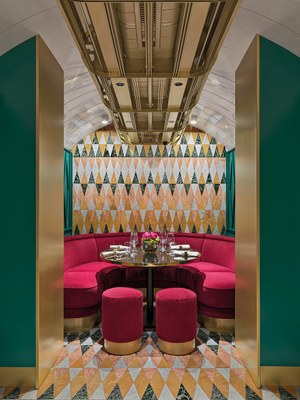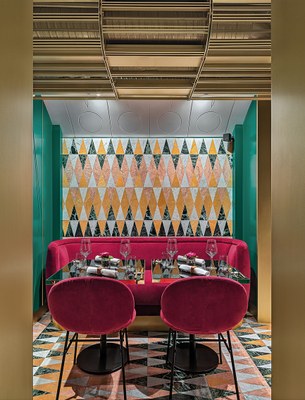Eclecticism and experimentation are the perfect words to describe the redevelopment programme that has transformed the neighbourhood of Covent Garden in London from a tourist destination into a lively, upbeat corner of the city.
But eclecticism and experimentation are also the fundamental ingredients of VyTA Covent Garden, the restaurant and cocktail bar open non-stop from breakfast to post-dinner, designed by COLLIDANIELARCHITETTO studio and conceived to promote a new style of fine food, which fuses Italian gourmet cuisine with contemporary design.
Located in the East tower of Covent Garden market, VyTA Covent Garden presents wooden walls and lacquered surfaces, inlays and friezes, glass and precious metals which shape glamorous spaces expressing unconventional Italian style.
The interior design draws heavily on the Italian architectural culture of the Sixties, from which it takes its refinement of the construction and decorative details, the conception of the space as a living set, and the cocktail of elegance and irony in its geometric stylizations: the rhombus constitutes the matrix of the dynamic elements that characterize design, from the macro engravings of the boiserie to the decorative patterns of the polychrome marble floors.
Organized on three floors, with a large outdoor area overlooking the square, which brims with street artists, and two terraces on the upper floor that serve as lounge bars, VyTA Covent Garden presents quintessentially elegant and sophisticated environments.
Through a Victorian-style window, consumers enter a vestibule, where the staircase with its rosewood steps – the heart of the historic building’s renovation – winds seamlessly around a robust septum in green Alpi marble, which visually and physically connects the different levels; gold-coloured wallpaper adorns the stairwell, dominated by an ethereal chandelier with macro brass leaves.
The lower floor, intimate and welcoming, houses several rooms with vaulted ceilings, once used as storage areas for the shops above: the polychrome marble floor, inspired by the artworks of the futurist painter Giacomo Balla, and the dynamism of his design composed of over 7,000 rhombuses and half-rhombuses in marble, brings continuity and fluidity to the rooms, fragmented by the original structure.
White lacquered vaults with rhombus and circle decorations dominate the succession of private spaces and niches, wrapped in lacquered walls with friezes and mirrors that amplify the space, while enveloping linear sofas, velvet-upholstered chairs in burgundy and pink peony, and glass tables with brass finishes complete the heterogeneous design of the rooms.
The upper floor interacts with the city through large windows: in the main room, mirrored surfaces amplify the space, while precious materials such as rosewood, brass, glass and velvet, invite guests to immerse themselves in a contemporary atmosphere; the cocktail bar is dominated by a counter cladded with polished brass tubes and a shelf in green Alpi marble.
In addition, two terraces, facing North and South respectively offer an unusual open-air experience in London: the first, more intimate, is equipped with sofas, coloured metal tables and large flower-filled vases; the other, which is larger in size, features a long counter and emerald green metal stools, and is visually projected towards the iconic Covent Garden dome and the vivid life of the square.
Finally, the external dehor, rebaptized “VyTA Garden” accommodates up to 100 people, is set with tables and chairs and shielded by large white umbrellas, representing an urban oasis where consumers can take a break from the heat and pace of the city.
The geometric patterns that adorn the surfaces, the bold colour choices, the striking velvet furnishings, and the large lamps with metallized globes, contribute to creating a unique location, with a strong and decisive character, so VyTA Covent Garden becomes the exceptional ambassador of Made in Italy and a must for lovers of today’s swinging London.
Photography is by Matteo Piazza.




